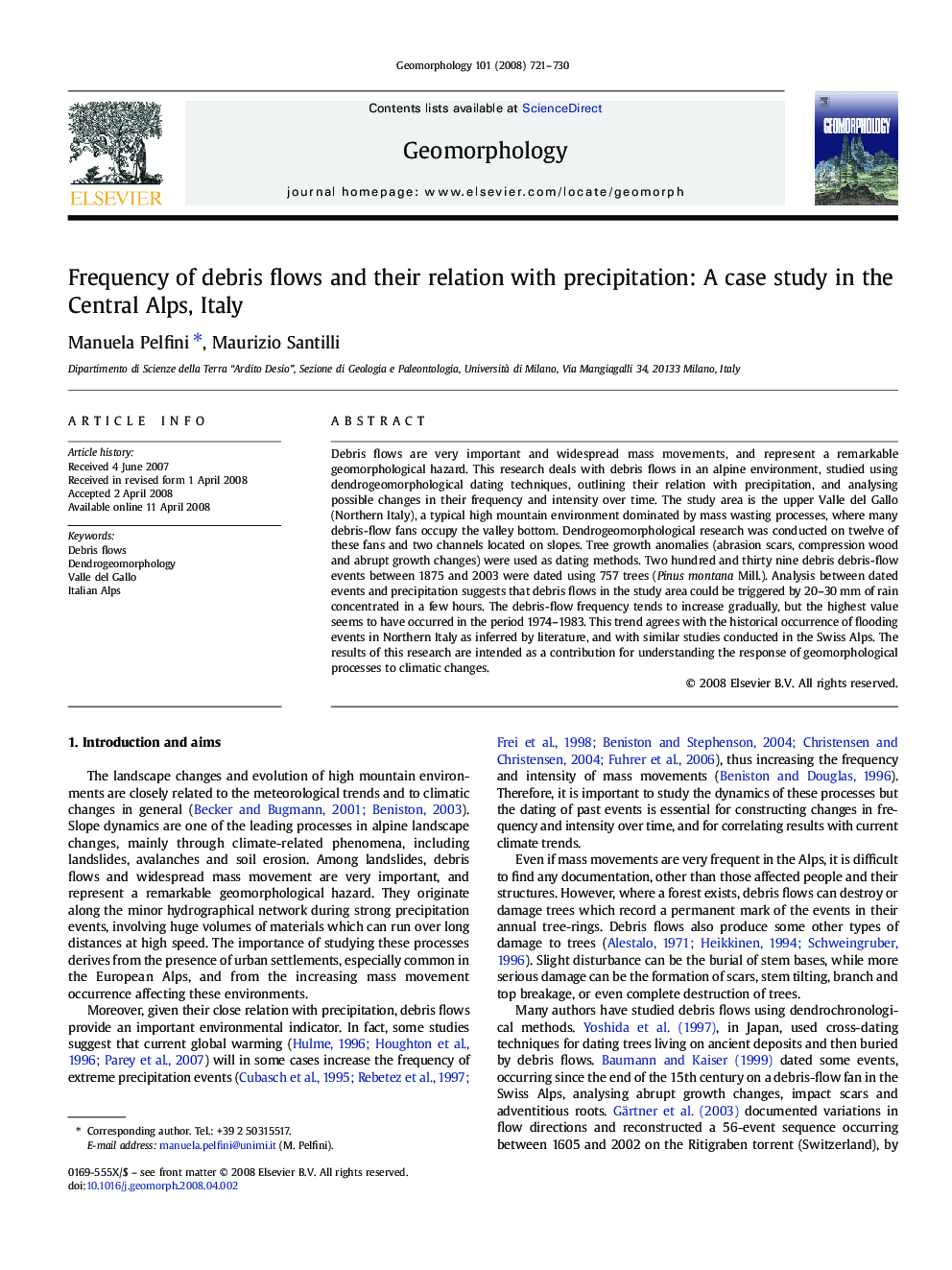| Article ID | Journal | Published Year | Pages | File Type |
|---|---|---|---|---|
| 4686591 | Geomorphology | 2008 | 10 Pages |
Debris flows are very important and widespread mass movements, and represent a remarkable geomorphological hazard. This research deals with debris flows in an alpine environment, studied using dendrogeomorphological dating techniques, outlining their relation with precipitation, and analysing possible changes in their frequency and intensity over time. The study area is the upper Valle del Gallo (Northern Italy), a typical high mountain environment dominated by mass wasting processes, where many debris-flow fans occupy the valley bottom. Dendrogeomorphological research was conducted on twelve of these fans and two channels located on slopes. Tree growth anomalies (abrasion scars, compression wood and abrupt growth changes) were used as dating methods. Two hundred and thirty nine debris debris-flow events between 1875 and 2003 were dated using 757 trees (Pinus montana Mill.). Analysis between dated events and precipitation suggests that debris flows in the study area could be triggered by 20–30 mm of rain concentrated in a few hours. The debris-flow frequency tends to increase gradually, but the highest value seems to have occurred in the period 1974–1983. This trend agrees with the historical occurrence of flooding events in Northern Italy as inferred by literature, and with similar studies conducted in the Swiss Alps. The results of this research are intended as a contribution for understanding the response of geomorphological processes to climatic changes.
